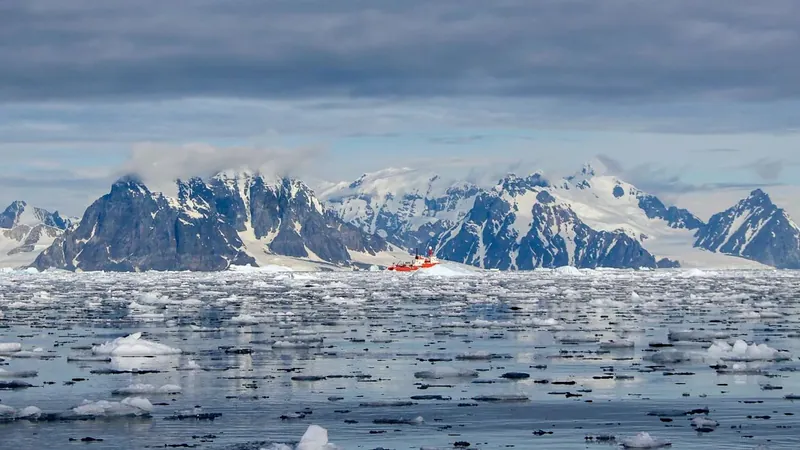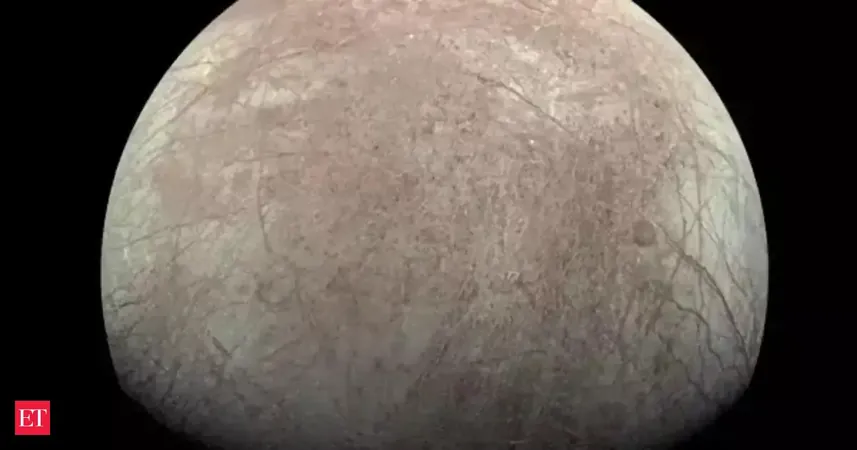
Unlocking Antarctica's Secrets: How Mud Samples Could Change Our Understanding of Climate
2025-08-18
Author: Wei Ling
Why Brave the Antarctic Chill?
Why would a team of intrepid researchers endure bone-chilling temperatures, biting winds, and turbulent seas to unearth mud from the bed of Antarctica? This year, in the isolated Antarctic Peninsula, this daring international team embarked on a mission that promises to unveil centuries of scientific revelations about the Southern Ocean.
A Look into the Past
These researchers are set to share and analyze invaluable mud samples, revealing how human activities—like a century of industrial whaling—have impacted Antarctica and the larger planet. This study is part of a worldwide initiative aimed at uncovering the complex relationship between our oceans and climate.
Drilling Deep: The Process
Utilizing a specialized coring drill—similar to an oversized apple corer—they managed to penetrate depths of up to 500 meters. The team successfully collected over 40 long sediment cores from various sites within this vital marine life habitat, known for its rich biodiversity and historical significance, especially concerning fishing, tourism, and past whaling practices.
Sediment: The Earth's Historical Record
Dr. Elisenda Balleste, the lead researcher from the University of Barcelona, likened the sediment layers to a "book of history." These layers preserve vital clues about present and past marine life alongside evidence of human impact. By analyzing these layers and determining their age, scientists can construct a comprehensive narrative of Antarctic marine history.
Global Collaboration for Climate Insight
Once aboard the research vessel, the cores were immediately frozen and transported to Dr. Balleste's lab in Barcelona. There, fragments of Antarctica’s unique mud will be dispatched to various academic institutions worldwide. Scientists will scrutinize these sedimentary layers, assessing microbial life, pollution levels, and the amount of carbon locked away in the mud.
The Value of Sediment Cores
According to Claire Allen, an oceanographer with over two decades of Antarctic research, these sediment cores are invaluable. "Before 1950, our capacity to monitor Antarctica was practically non-existent. Sediment and ice cores are our only means of understanding historical climatic changes," she stated.
DNA Analysis: Uncovering Whaling's Legacy
The recent mud samples will undergo DNA analysis, necessitating storage at frigid temperatures to prevent degradation. Dr. Balleste showcased these samples, which are carefully preserved at -80 degrees Celsius, to demonstrate their significance. This pioneering method of environmental DNA analysis allows scientists to extract genetic data from various sources, illuminating the impact of historical whale hunting.
The Carbon Connection
Dr. Carlos Preckler from King Abdullah University is spearheading this aspect of the research. His focus is to determine how industrial whaling has shaped not just the ocean's ecosystem, but our atmosphere as well. Given that carbon dioxide traps heat in our atmosphere, understanding how carbon is sequestered in whale bodies and subsequently in sediment could offer clues in combating global warming.
Whales: Unsung Heroes in Climate Action?
"Whales contain vast amounts of carbon due to their size," Dr. Preckler noted. He aims to quantify how much carbon is sequestered in the seafloor after a whale's death, providing insights into the role these magnificent creatures play in climate regulation. The research, he asserts, will shed light on the natural processes by which whales help sequester carbon and their potential impact on mitigating climate change.




 Brasil (PT)
Brasil (PT)
 Canada (EN)
Canada (EN)
 Chile (ES)
Chile (ES)
 Česko (CS)
Česko (CS)
 대한민국 (KO)
대한민국 (KO)
 España (ES)
España (ES)
 France (FR)
France (FR)
 Hong Kong (EN)
Hong Kong (EN)
 Italia (IT)
Italia (IT)
 日本 (JA)
日本 (JA)
 Magyarország (HU)
Magyarország (HU)
 Norge (NO)
Norge (NO)
 Polska (PL)
Polska (PL)
 Schweiz (DE)
Schweiz (DE)
 Singapore (EN)
Singapore (EN)
 Sverige (SV)
Sverige (SV)
 Suomi (FI)
Suomi (FI)
 Türkiye (TR)
Türkiye (TR)
 الإمارات العربية المتحدة (AR)
الإمارات العربية المتحدة (AR)